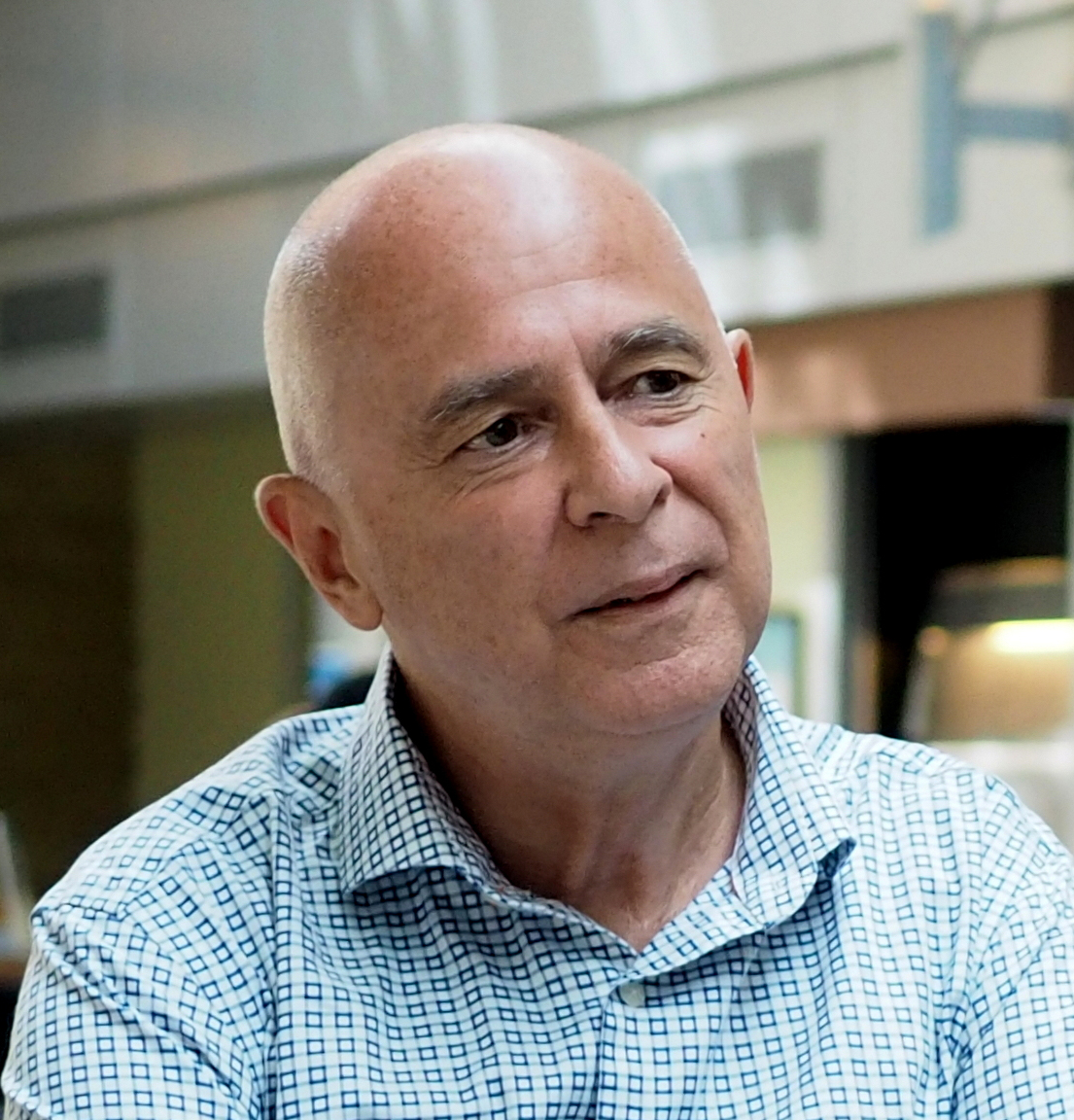Preventing hospital-acquired pneumonia
Researchers used the CLS to identify a previously unrecognized family of enzymes that put us at risk for deadly diseases.
By Erin MatthewsTwo doctors stand over a patient on a hospital bed.

Klebsiella pneumoniae is responsible for a variety of hospital-acquired infections such as pneumonia and sepsis. The bacterium has become increasingly resistant to antibiotics, making it a focus of interest for health care professionals and researchers.
Lipopolysaccharides (LPS) are large molecules found on the outer surface of some bacteria like K. pneumoniae. These molecules give bacteria an advantage against attacks from our immune system, but they can also be used as a target for vaccines.
Chris Whitfield and Matthew Kimber from the University of Guelph (U of G) and Todd Lowary from the University of Alberta used the CLS to visualize how enzymes in K. pneumoniae make the long polysaccharides that create the large surface LPS molecules, described in a new paper published by Nature Chemical Biology.
Whitfield has been working on polysaccharides like LPS throughout his career. Recently, collaborative work with Kimber and Lowary has led to several new discoveries.
Enzymes allow bacteria to grow and build the large molecules that help them to establish an infection.

Using the CMCF beamline at the CLS, the researchers identified a previously unrecognized family of enzymes on the part of a molecule referred to as DUF4422. Kimber explained that the DUF is unique and doesn’t closely resemble any known family of enzymes. “DUF4422 domains are found in the genomes of thousands of bacteria but, up until this point, nobody understood what they do. Discoveries like this help highlight the enormous diversity of strategies bacteria have evolved to build LPS,” Kimber said.
By analyzing the function of the DUF at the CLS, the team discovered how the bacterium assembles polysaccharides and, as a result, evades our immune defenses.
“The architecture of this enzyme ideally positions the dual catalytic sites to control polysaccharide synthesis at the membrane-cytoplasm interface,” Whitfield said.
K. pneumoniae resistance to antibiotics continues to be a major health threat worldwide. Whitfield believes there is an advantage to knowing how the targets are built. Their research will help other scientists understand what enzymes are needed and how they come together, which can assist in vaccine development.
Whitfield’s lab continues to focus on understanding these key enzymes and how they interact with others in the overall structure. He emphasized the importance of this kind of fundamental work that allows scientists to go after the bigger questions and hopefully lead to downstream translational discoveries.
Clarke, Bradley R., Olga G. Ovchinnikova, Ryan P. Sweeney, Evelyn R. Kamski-Hennekam, Russel Gitalis, Evan Mallette, Steven D. Kelly, Todd L. Lowary, Matthew S. Kimber, and Chris Whitfield. "A bifunctional O-antigen polymerase structure reveals a new glycosyltransferase family." Nature Chemical Biology (2020): 1-8. DOI: 10.1038/s41589-020-0494-0.
For more information, contact:
Victoria Schramm
Communications Coordinator
Canadian Light Source
306-657-3516
victoria.schramm@lightsource.ca
